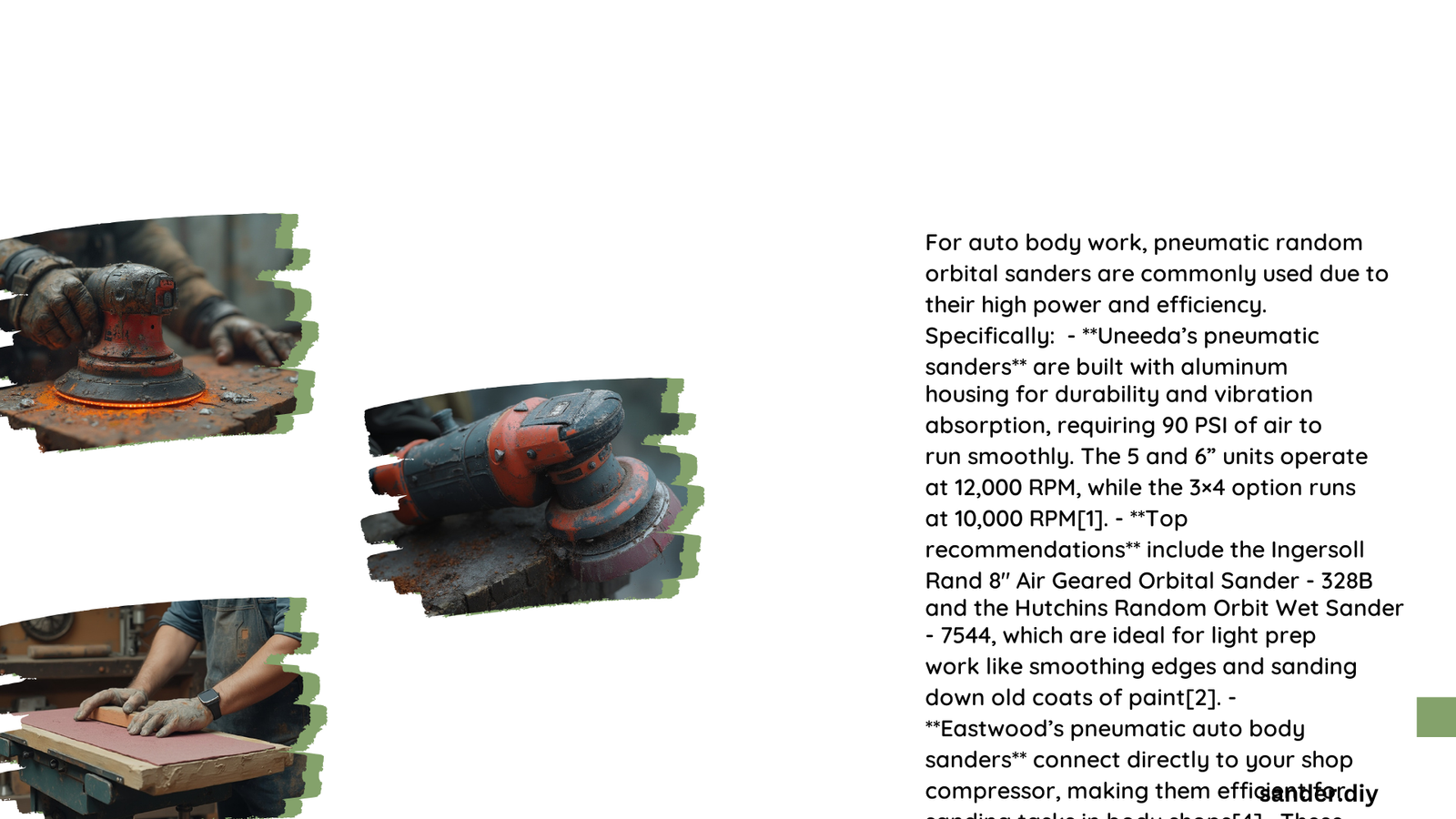Pneumatic sanders are essential tools in automotive body repair, providing professionals with precise, powerful, and efficient surface preparation capabilities. These compressed air-driven tools enable technicians to smooth, level, and prepare surfaces for painting, removing old finishes, and achieving flawless body work across various automotive materials like metal, fiberglass, and body filler.
What Are the Primary Pneumatic Sanders for Auto Body Work?
Orbital Sanders: Precision Surface Preparation
Orbital sanders represent a critical tool in auto body work, offering exceptional surface smoothing capabilities. These sanders utilize a unique circular or random orbital motion that prevents swirl marks and provides uniform sanding results.
Key Characteristics
- Motion Type: Circular/random orbital movement
- Pad Size: Typically 5-6 inches
- Air Pressure: 90-100 PSI
- Best For:
- Smoothing body panels
- Preparing surfaces for painting
- Removing light paint imperfections
Straight Line Sanders: Large Surface Management
Straight line sanders excel in handling extensive, flat automotive surfaces with remarkable efficiency and precision.
Performance Highlights
- Motion Type: Linear/back-and-forth
- Ideal Surface Areas: Large body panels
- Typical Applications:
- Sheet metal preparation
- Body filler smoothing
- Extensive surface leveling
Belt Sanders: Aggressive Material Removal
Belt sanders provide powerful material removal capabilities, making them indispensable for heavy-duty automotive restoration tasks.
Technical Specifications
- Abrasive Method: Continuous moving belt
- Pressure Range: 90-100 PSI
- Primary Uses:
- Removing spot welds
- Grinding metal surfaces
- Preparing heavily damaged areas
Detail Sanders: Precision in Tight Spaces
Detail sanders specialize in accessing hard-to-reach areas, ensuring comprehensive surface preparation.
Unique Features
- Pad Shape: Triangular/teardrop
- Size: Compact design
- Specialized For:
- Corner sanding
- Intricate body panel work
- Tight space refinishing
Top Recommended Pneumatic Sanders for Professional Auto Body Work

| Sander Type | Top Model | Price Range | Key Advantage |
|---|---|---|---|
| Orbital | 3M Finesse-it (65993) | $200-$300 | High-quality finish |
| Straight Line | Hutchins Hustler (2000) | $300-$400 | Large surface efficiency |
| Belt | Astro Pneumatic (3037) | $150-$250 | Aggressive material removal |
| Detail | Ingersoll Rand (3128XPA) | $100-$200 | Precision in tight spaces |
Selecting the Right Pneumatic Sander: Expert Recommendations
Considerations for Tool Selection
- Surface Material: Different sanders suit different automotive materials
- Project Complexity: Match tool to specific repair requirements
- Budget: Professional-grade tools vary significantly in price
- Ergonomics: Consider weight and user comfort
Grit Selection Guide
- Rough Sanding (80-120 grit): Initial surface preparation
- Intermediate Sanding (150-220 grit): Surface smoothing
- Finishing Sanding (240-400 grit): Pre-painting refinement
Maintenance and Care Tips
- Regular air tool lubrication
- Clean dust collection systems
- Store in dry, temperature-controlled environments
- Use manufacturer-recommended accessories
Pro Tips for Optimal Performance
- Always wear appropriate personal protective equipment
- Match sander to specific automotive surface
- Gradually progress through different grit levels
- Maintain consistent pressure during sanding
Reference:
1. Mirka Automotive Body Work
2. Auto Body Toolmart Sander Guide
3. Tend Supplies Automotive Tools
